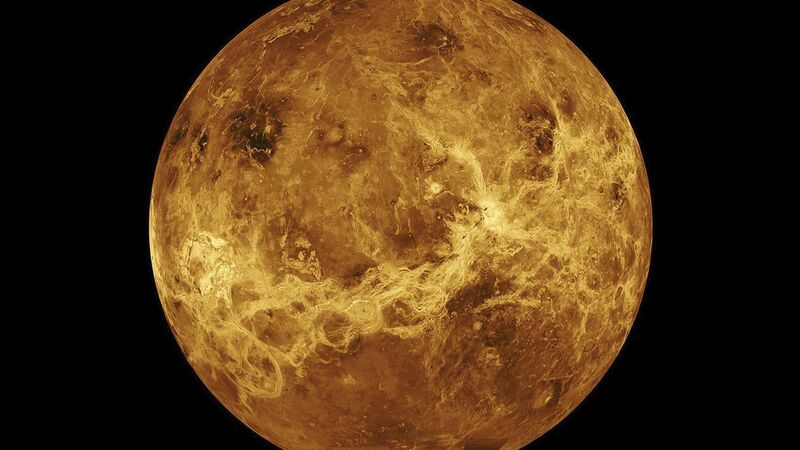Sky Matters: Watch out for the 'parade of planets' in January

This image made available by NASA shows the planet Venus made with data from the Magellan spacecraft and Pioneer Venus Orbiter. On Wednesday, June 2, 2021.
DESPITE the longest night being behind us for another year, dark skies in January make it a great month for looking skywards.
If you do venture outside remember the golden rules:
- Stay warm (this includes wearing a hat);
- Give your eyes about 20 minutes to adapt to the dark. (Hence the need to observe Rule 1.);
- Find the darkest place easily available to you — that can sometimes simply be in the shadow of your house, and it’s truly amazing the difference walking a few metres can make.
There are plenty of astronomy apps for mobile phones to guide your viewing, but be aware that they can destroy or diminish your patiently earned dark adaptation in a fraction of a second.
So use with care, and once you have become familiar with a few of the brighter constellations and planets you won’t need to use the apps regularly.
You will even come to recognise the planets from their colour and the fact that they don’t twinkle. By persevering you’ll quickly develop a kind of planetary sixth sense.
Speaking of planets, Venus dominates our evening sky in January and is easily visible high up to the west. Given its brightness and altitude above the horizon this is a great opportunity to introduce a planet to a younger (or older) audience.
No need to find a dark sky place or an unobstructed horizon and there’s the added bonus that it’s bright enough to be visible before the bedtime of even the earliest amongst us. You won’t even need to let your eyes adapt to the dark (so no hat required).
If you watch Venus closely from one night to the next, you’ll see how it moves discernibly compared to the background stars.
With binoculars or a telescope, you might notice it exhibits phases that change over the course of a few weeks, very similar to the way the moon behaves.
This relatively simple observation, first recorded by Galileo Galilei in 1610, is easy to explain if Venus orbits the Sun closer than the Earth.
While that may not sound particularly significant it contributed to the development of a Sun-centred model of the Universe, overturning centuries of belief that the Earth is at the centre.

ON JANUARY 18, Venus and Saturn are only two degrees from each other (about four times the diameter of the moon). Saturn will appear to the left of Venus, with Saturn discernible as a much fainter yellow-ish starlike object.
Over the course of a couple of weeks you can watch these two planets perform their apparently close cosmic encounter, but in reality they are separated by millions of miles as they go about their individual orbits around the Sun.
During 2025 the rings of Saturn will gradually “disappear” and in January they will already appear very thin, so this is amongst the last months (until around November when they reappear) when you’ll be able to see them.
Also in skies in January are the planets Jupiter and Mars. Jupiter is high up in the sky from dusk towards the south.
A line through the three stars in Orion’s Belt point towards the planet, making it easy to find. Mars is further east and a deep red colour.
On the evening of January 13 and 14 it will pass very close to the moon — for observers in the US and Africa it will pass behind the moon (referred to as an occultation).
On January 15 and 16 the Earth will be directly between the Sun and Mars and the Red Planet will be at its brightest for 2025.
With this “parade of planets” visible, each bright enough not to need that aforementioned hat, January is the ideal time to become acquainted with our nearest celestial neighbours.






